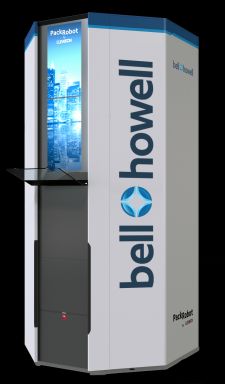Intel, Apple, Amazon and Expedia are opening the books on gender pay equity.
March 25, 2016

 Transparency about gender-pay equity is officially a trend. This week, Amazon and Expedia became the third and fourth big U.S. tech companies in just the past eight weeks to say they’re moving to close the gap (they join Intel and Apple). Amazon on Wednesday announced that a review of its U.S. employee base, including warehouse workers, showed that women’s 2015 compensation was 99.9% of what men in equivalent positions earned. Expedia has committed to disclose by October the percentage of pay (salary, bonus and equity) earned by female employees compared with male employees, along with a plan to fix any disparity and make sure salaries are aligned in the future.
Transparency about gender-pay equity is officially a trend. This week, Amazon and Expedia became the third and fourth big U.S. tech companies in just the past eight weeks to say they’re moving to close the gap (they join Intel and Apple). Amazon on Wednesday announced that a review of its U.S. employee base, including warehouse workers, showed that women’s 2015 compensation was 99.9% of what men in equivalent positions earned. Expedia has committed to disclose by October the percentage of pay (salary, bonus and equity) earned by female employees compared with male employees, along with a plan to fix any disparity and make sure salaries are aligned in the future.
That raises the question: How is the channel doing here? We decided to find out. Our first Channel Compensation Survey is up and running now. The effort is underwritten by AT&T, and our friends at the 451 Alliance are hosting the poll and helping with analysis. Please take a moment to join the survey, and point your colleagues our way as well; it’s at 451Alliance.com/CPsurvey for easy reference. The more respondents we get, the better we can slice and dice the data to reveal how region, vertical served, tech specialties and other factors – including gender – affect compensation.
To show our appreciation, you can enter to win a $100 Amazon gift card. It’s completely anonymous, and everyone who completes the survey gets a copy of the resulting report.
Talkin’ Jive Recap
In case you missed the presentation last week in Vegas, Jive took home the award for best new product, for its Jive Video Professional multipoint videoconferencing and collaboration service.
Conference attendees selected the product, which offers cloud-based direct point-to-point conferencing or multipoint virtual meetings and real-time collaboration. Jive Video allows users to stream virtual meetings anywhere, at any time, via any device and display documents to all conference participants with a mouse click.
The company also announced the launch of Jive Partnerplus, a Web toolkit to help its partners create and convert leads, manage accounts and track conversions, and access marketing and training resources from a unified interface on Jive’s PBX control panel, with paperless onboarding. Jive also offers residual commissions for the life of a customer and support for verticals including healthcare and education as well as products geared to SMBs.
Robotic Answer to Porch Pirates
 The problem of packages being stolen from porches has been all over the news. One solution: The PackRobot intelligent locker system, unveiled this week at Bell and Howell’s headquarters in Durham, N.C. The PackRobot is targeted at retail and education, and it’s not difficult to imagine a local convenience store in an urban area offering pickup as a service, whether for a small fee or simply to pull customers in the door.
The problem of packages being stolen from porches has been all over the news. One solution: The PackRobot intelligent locker system, unveiled this week at Bell and Howell’s headquarters in Durham, N.C. The PackRobot is targeted at retail and education, and it’s not difficult to imagine a local convenience store in an urban area offering pickup as a service, whether for a small fee or simply to pull customers in the door.
In a statement, the company said intelligent lockers are well established in Europe and are gaining attention from U.S. business for “click-and-collect” or “buy online, pick up in store” and campus package delivery and returns. Bell and Howell and Cleveron, which produces the lockers, see the potential for 15,000 parcel terminals in North America in the next five years.
Unlike traditional smart lockers that offer a fixed number of pre-set cubbyhole sizes, PackRobot measures each parcel’s dimensions and uses a proprietary 3D lift system to dynamically configure a locker slot to fit the parcel. That maximizes use of floor space. Because it has on-board climate control, the system can be placed outdoors. An integrated smartphone app enables consumers to retrieve a parcel in as little as 10 seconds; for security, every parcel is photographed, weighed and measured to ensure the right package is delivered to the right recipient.
The company says that, depending on add-ons, the cost for a PackRobot ranges from $75,000 to $85,000. Not inexpensive, but given the capacity-to-floor-space ratio – and, let’s face it, the whiz-bang factor – it could be a nice addition to some retail shops.
Der Hacker Mouse
As if you need another security risk to worry about, this week on Marc Newlin and Balint Seeber, security researchers from cyber security startup Bastille Networks, introduced the term “MouseJacking.” The two say wireless mice from companies including HP, Lenovo and Dell use unencrypted radio signals to communicate with PCs; the signals can span a distance equivalent to a city block, and that could open millions of networks to attack via a dongle device that costs as little as $15.
“They haven’t encrypted the mouse traffic; that makes it possible for the attacker to send unencrypted traffic to the dongle pretending to be a keyboard and have it result as keystrokes on your computer,” said Newlin. “This would be the same as if the attacker was sitting at your computer typing.”
Bastille says it’s keeping tabs on the problem and advises checking with mouse vendors for firmware updates to correct the issue. Failing that, switch to USB or a Bluetooth mouse, which is not vulnerable to this type of attack.
Get Off My E-Lawn
A new report from the Consumer Technology Association says “active aging technology” represented a $24.4 billion market opportunity in 2015, and that will grow to $42.7 billion in 2020 — a tidy 12 percent CAGR over the next five years. The category includes tech products that support “a proactive way of living that balances growing older with the active pursuit of quality of life.”
The CTA says a perfect storm is opening this opportunity. First, the 76-million-strong Baby Boomer generation is reaching retirement age even as the “Silent Generation” is living much longer than expected. Long-term-care service providers face a capacity shortage and restrained funding as the government shifts some incentives to home care. And, more consumers are adopting Internet of Things and smart-home technology as the FDA adds clarity to its review process for device makers and app developers.
Partners serving the health-care vertical should look at three areas called out in the report. Heck, we just wrote about a firm making $250,000 a year tracking the health of horses; IoT solutions in any of these areas could be lucrative:
Safety: Includes monitoring using sensors, emergency response solutions and home-living support services
Health device and remote care: Includes technology that empowers seniors or caregivers to track personal health indicators that in the past could only be collected at a doctor’s office, remote diagnostic and monitoring solutions, and virtual consultation as a supplement to in-office visits
Wellness and fitness solution providers: Includes wearable activity trackers, diet and weight loss tools that encourage healthy eating and age-appropriate exercise and wellness monitoring tools and apps
D-Link Enhances Channel Program
Wi-Fi networking and camera surveillance provider D-Link announced this week some new channel initiatives under the banner of its Value in Partnership+ program. The company says the goal is to increase partner profitability and support. Besides new sales and marketing tools, D-Link will offer expanded certifications for its products. Highlights of the VIP+ program include upfront discounts and 24/7 priority tech support on business-class products and quarterly volume incentive rebates.
A recent report from Knowledge Sourcing Intelligence says the physical security market for enterprise data centers alone will reach $5.557 billion by 2021, growing at a CAGR of almost 17 percent. That includes cameras, access control systems and perimeter security.
Follow executive editor @LornaGarey on Twitter.
Read more about:
AgentsAbout the Author(s)
You May Also Like


